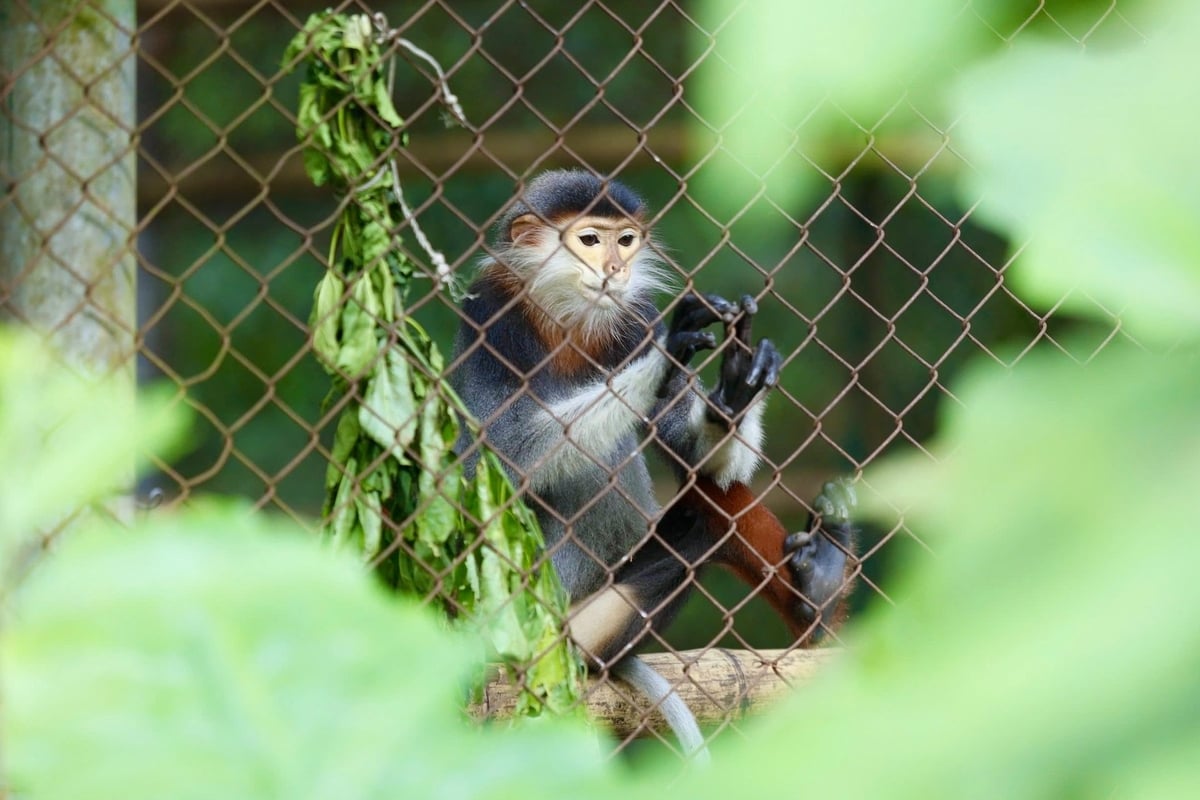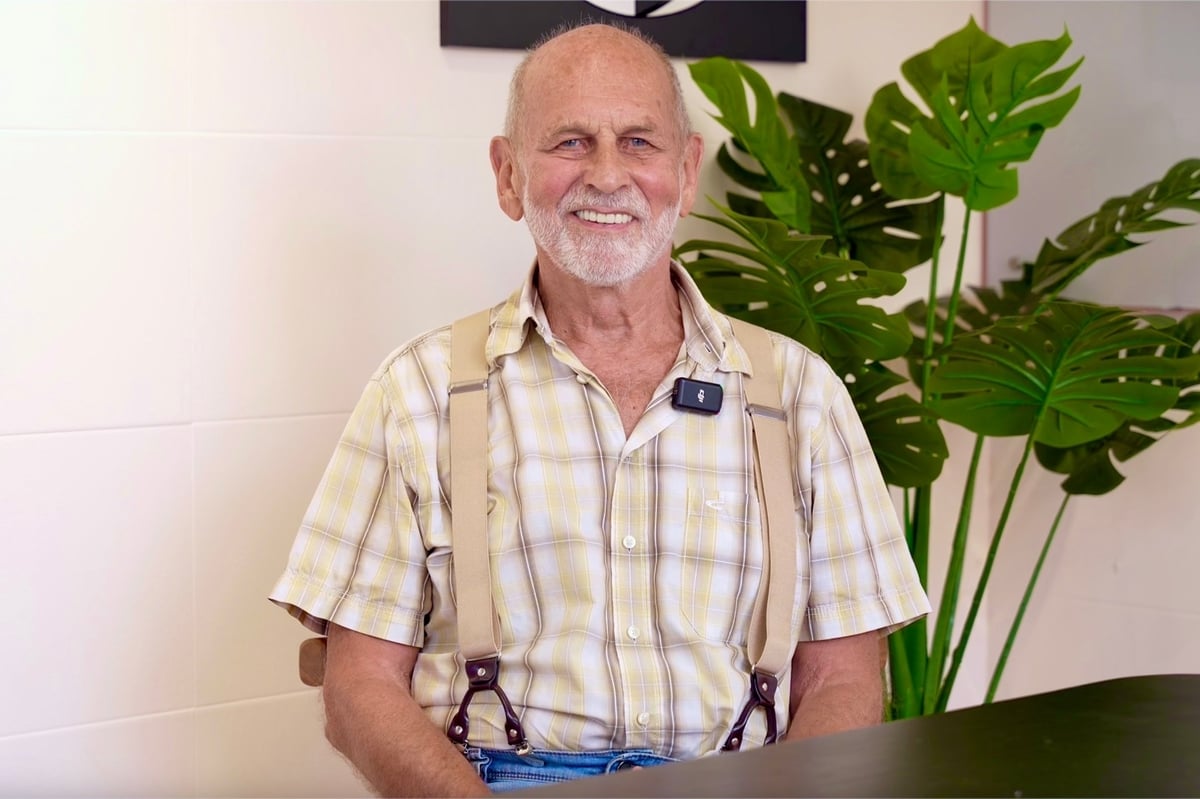October 30, 2025 | 17:27 GMT +7
October 30, 2025 | 17:27 GMT +7
Hotline: 0913.378.918
October 30, 2025 | 17:27 GMT +7
Hotline: 0913.378.918

The gray-shanked douc langur - a primate species endemic to Vietnam - is listed as Critically endangered in the IUCN Red List. Photo: Tuong Vy.
In Vietnam’s forest ecosystems, primates play an exceptionally vital role. They are not only maintain plant diversity but also sustain ecological balance and preserve the complex structure of primary forests.
At present, Vietnam boasts a remarkable diversity of primate species, with 25 known species - the highest number recorded in any Southeast Asian country. Among these, several species are endemic, meaning they are found exclusively in specific regions or isolated islands within Vietnam, adding to the country’s unique biodiversity value.
However, this precious biodiversity is currently facing numerous severe threats. Experts warn that Vietnam is home to five primate species included in the list of the world’s 25 most endangered primates, representing a significant 20% of those species teetering on the brink of global extinction. Even more concerning is the fact that approximately 90% of the primate species native to Vietnam are now classified as threatened. This alarming figure underscores the urgent need for effective conservation measures to safeguard these species.
Despite some positive progress in recent years, primate conservation in Vietnam still confronts many challenges. One of the most critical issues is habitat alteration and fragmentation. These are caused by human activities that disrupt and divide the natural habitats of primates, limiting their access to essential food resources and restricting movement and genetic exchange between separate groups. Over time, this isolation can drastically reduce genetic diversity, weakening populations and jeopardizing their long-term survival and adaptability.
Meanwhile, illegal hunting and wildlife trafficking of primates remain persistent problems, though there has been a decline in recent decades. Many rare and valuable species continue to be hunted for various purposes, including as exotic pets, ingredients in traditional medicine, and delicacies in rare culinary practices. These illicit activities are especially prevalent in remote and less accessible areas where law enforcement and monitoring capacities are limited.

Dr. Tilo Nadler shared insights on the current situation and solutions in primate conservation and rescue efforts. Photo: Tuong Vy.
According to Dr. Tilo Nadler, former Director of the Center for Rescue of Endangered Primates at Cuc Phuong National Park, Ninh Binh, over the past 30 years, illegal primate hunting has decreased due to the decline in primate populations and more effective forest ranger activities. However, wildlife poaching in general remains at a high level.
He stated, “A lack of knowledge about the law can lead to wrongful behaviors.” Dr. Nadler also emphasized that raising public awareness is a key factor in protecting primates and other wildlife species. “In Vietnam, we can only protect nature and wildlife with the support of the public,” he stressed.
This requires not only positive communication about the value of biodiversity but also transparent publication of penalties related to illegal hunting and trafficking of wildlife, thereby creating a deterrent effect in society. “If someone receives a heavy penalty for illegal wildlife trading but no one knows about it, then it does not serve as a deterrent,” he explained.
Dr. Nadler shared that media outlets such as the press should accompany conservation forces not only in advocacy but also in reporting specific court verdicts, contributing to strengthening law enforcement.
Primate conservation is not just the concern of the forestry sector or a few conservation organizations. It is a collective challenge that requires the involvement of the entire society, from policy and legal frameworks to community education and mass media. Because when a primate species disappears, it is not only a biological loss but also the loss of an irreplaceable link in the forest ecosystem.
Translated by Phuong Linh

(VAN) Sustainable rice production requires a comprehensive soil management strategy, the application of technology, value chain linkages, and integrated economic, social, and environmental solutions.

(VAN) Kim Anh commune (Hanoi) is shifting to biosecure livestock farming to improve product quality and increase sustainable economic value.

(VAN) Early on October 30, all relief supplies from the Russian Federation arrived at Noi Bai Airport and immediately transported to Hue City during its peak of the flooding.

(VAN) According to Deputy Minister Nguyen Hoang Hiep, just 20 days after the appeal was launched, Viet Nam received assistance from 30 countries and international organizations, with a total value of USD 9.7 million.

(VAN) SEAMAP and ROMONA sign a 2025 - 2028 Memorandum of Understanding, marking a new chapter in Viet Nam’s marine geodesy and positioning technology development.

(VAN) UNICEF, in cooperation with the Ministry of Agriculture and Environment, has provided 800 water storage tanks, 800 essential hygiene kits, and 80,000 water purification tablets to people affected by the recent floods.

(VAN) More than 32,000 plant genetic samples currently preserved in Vietnam’s National Genebank are laying the foundation for the establishment of a National Botanical Garden and the development of climate-resilient crop varieties.